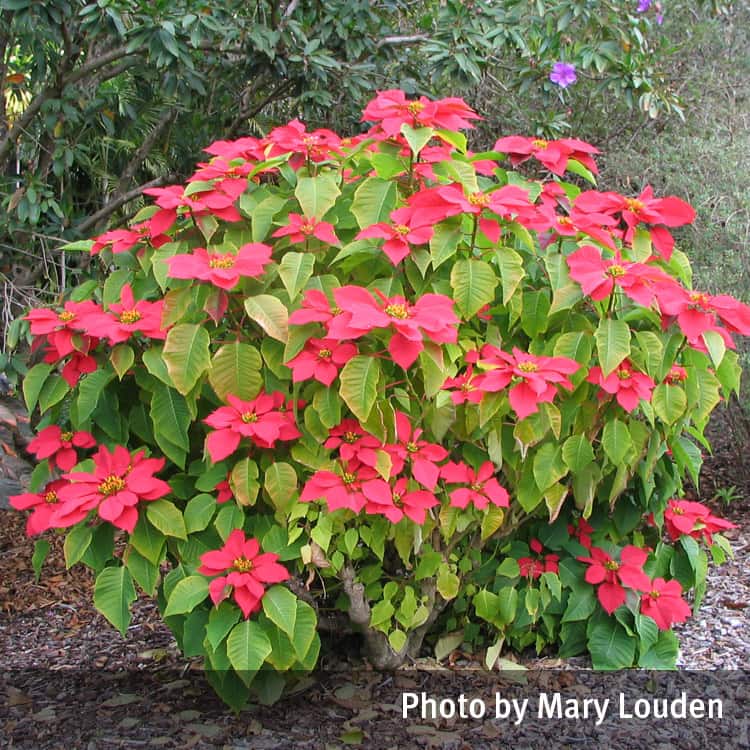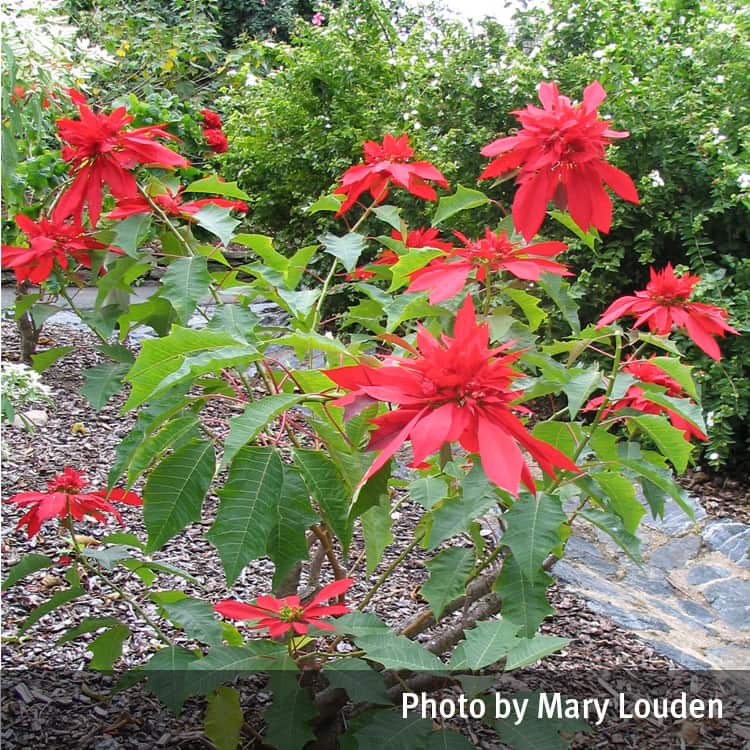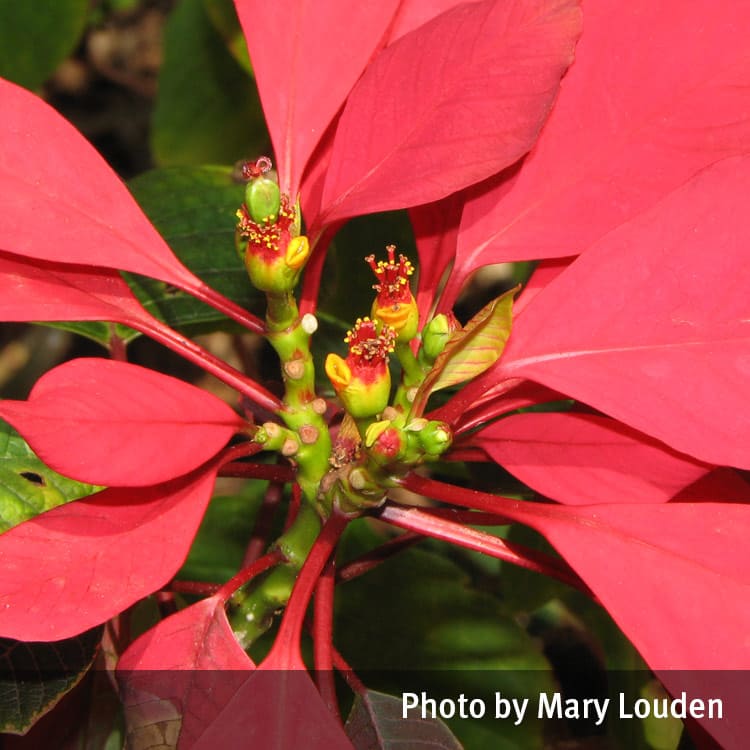Warning
Seek medical attention if exposure results in symptoms.
Description
A shrub to 2.5m tall cultivated as an ornamental garden plant in warmer temperate areas or as a smaller potted indoor plant in cooler climates.
The small yellow flowers are held in terminal bunches with bright coloured leafy bracts directly below. Bracts are similar in size to the leaves and are most often bright crimson red, but can also be cream coloured, pink, apricot, pale green or white.
In double-flowered cultivars, the bracts become progressively smaller towards the centre ultimately replacing the flowers.
Toxicity
Symptoms
Current evidence suggests this plant is low in toxicity, however ingestion of large quantities may cause diarrhoea and vomiting. Skin contact may cause dermatitis. The sap may cause eye irritation and temporary blindness.
Images



Details
Common name: Poinsettia
Botanical name: Euphorbia pulcherrima.
Other common names: Christmas flower, Easter flower, Crown of the Andes, Mexican flame leaf
Family: Euphorbiaceae
General description: A shrub to 2.5m tall cultivated as an ornamental garden plant in warmer temperate areas or as a smaller potted indoor plant in cooler climates.
Flowers: The small yellow flowers are held in terminal bunches with bright coloured leafy bracts directly below. Bracts are similar in size to the leaves and are most often bright crimson red, but can also be cream coloured, pink, apricot, pale green or white. In double-flowered cultivars, the bracts become progressively smaller towards the centre ultimately replacing the flowers.
Leaves: Leaves are dark green, paler underneath, 7 to 20cm long and 4 to 10cm wide usually with shallow lobes or teeth along the margins and pointed at the tip.
Fruit/Berries: Fruit are very small and three lobed with each lobe containing an oblong seed.
Other: Copious milky sap.